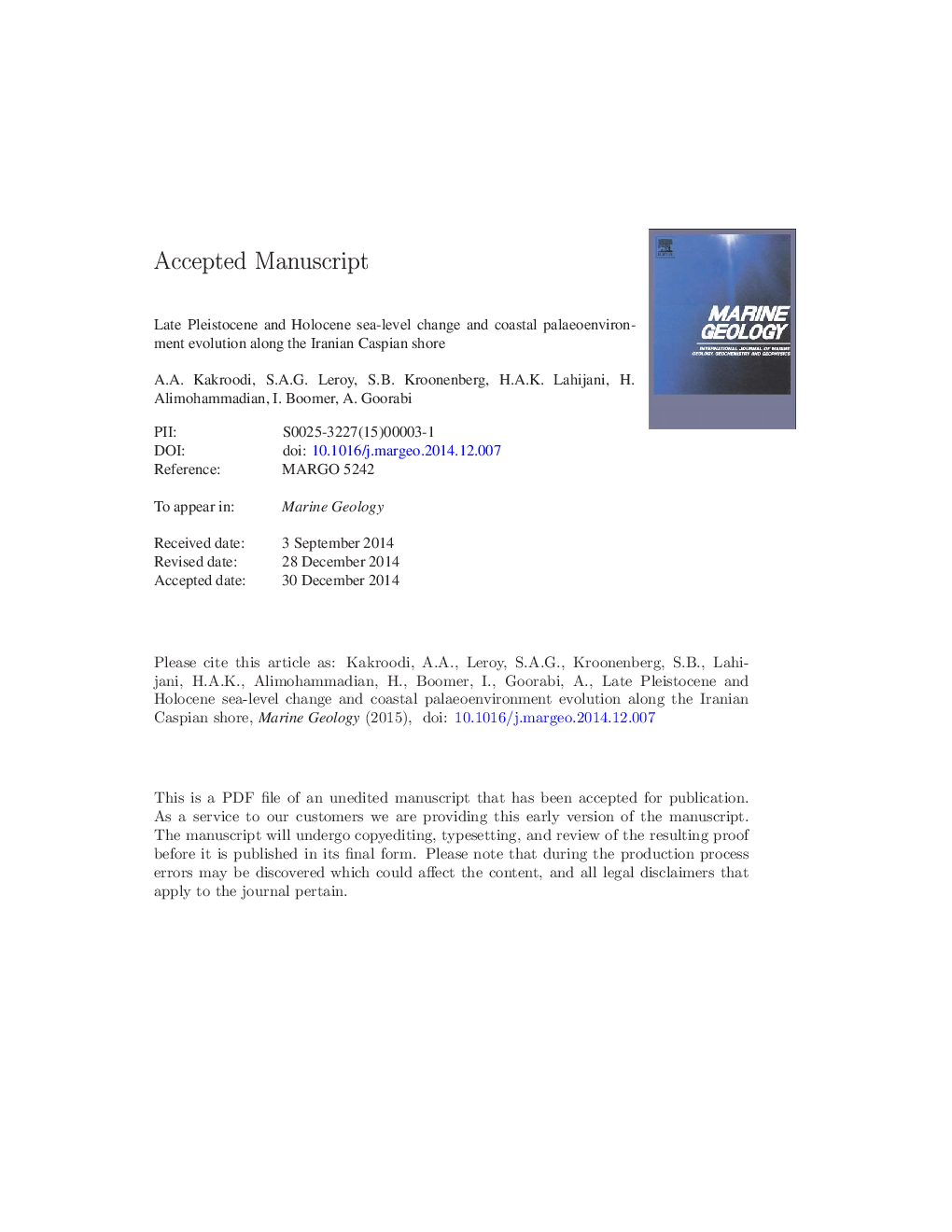| Article ID | Journal | Published Year | Pages | File Type |
|---|---|---|---|---|
| 6441554 | Marine Geology | 2015 | 51 Pages |
Abstract
We reconstructed Late Pleistocene to Holocene Caspian Sea-level by a multi-disciplinary approach from a 27.7 m long core in the SE corner of the Iranian Caspian coast in the Gomishan Lagoon. Late Pleistocene deposits containing typical Pleistocene fauna and dated around 20,120 cal yr BP bordered with a major hiatus indicating sea-level fall. Lagoonal deposits with shells dated at around 10,590 cal yr BP suggest that, after this deep lowstand, an initial transgression started, leading to landward advance of barrier-lagoon systems which still continued without any lowstand until 8400 cal yr BP. This corresponded to a biofacies change from lagoonal to the deeper biofacies including diatom and Gastropoda species. Around 8400 cal yr BP sea-level started to fall again, and reddish oxidized sediments with abundant foraminifera (Ammonia beccarii) record a regressive phase around 7700 cal yr BP. The mid-Holocene between 15.7 and 4.9 depths is characterized by a shallow marine environment mostly with high carbonate and gypsum contents, and lagoonal and highstand tract with no subaerial facies. The upper part of the core above a 4.9 m depth reflects at least five Late Holocene Caspian Sea-level cycles from 3260 cal yr BP onward. The Caspian Sea-levels are influenced both by global and regional events.
Related Topics
Physical Sciences and Engineering
Earth and Planetary Sciences
Geochemistry and Petrology
Authors
A.A. Kakroodi, S.A.G. Leroy, S.B. Kroonenberg, H.A.K. Lahijani, H. Alimohammadian, I. Boomer, A. Goorabi,
